Features of gas generators for home

Electricity is the most basic convenience. There is no electricity only in the most remote wilderness, and even then humanity has already learned how to extract it practically from the air. Electrical appliances allow you to provide all other amenities - to establish water supply and water heating in the house, heating and the possibility of cooking, not to mention lighting and even the Internet.
One of the most practical options for self-generation of electricity, regardless of the presence of infrastructure and communications in the vicinity, is a gas generator for the home.
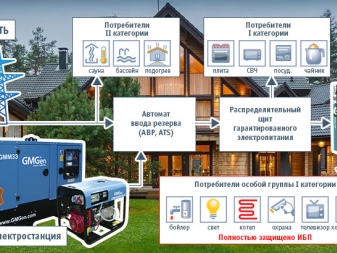
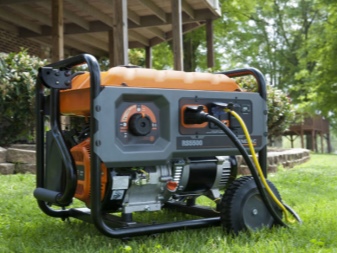
What it is?
The gas generator is sometimes also referred to as a home gas power plant., and quite rightly - the principle of operation of the device is approximately the same. This device is based on an ordinary internal combustion engine running on one or another type of gas. The motor drives the rotor, which rotates and thereby provokes the generation of electric current.
It should be noted that an ordinary household gas generator is often not so much the main source of electricity as a safety net in case of a "blackout". However, this situation is largely due to the fact that in our country it is not so easy to find a human settlement where there would be no power lines at all, but at the same time there was an opportunity to supply gas. Nevertheless, somewhere in the wilderness, such a unit can become a real find, since it turns out to be the only way to provide human life with a level of comfort familiar to our time.
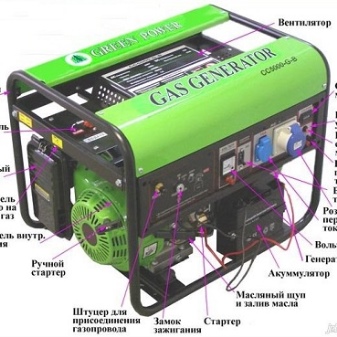
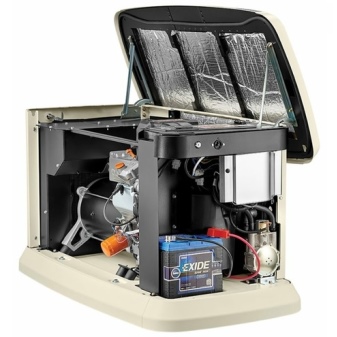
Advantages and disadvantages
Gas generators in our country are rarely the main source of power supply - it's easy to guess about this, if only because you don't see such equipment so often in someone's house. Even if there is such a unit, it often "insures" the dacha. Nevertheless, it can be very useful there, but it is not uncontested. This ambiguity is possible, since this device, like any other, has its own advantages and disadvantages.
It should be noted right away that the generator can operate both on liquefied gas and on ordinary natural gas - that in a gas pipe. The first option has, in fact, only one advantage, but quite significant - it has modest dimensions and weight, and therefore is portable.
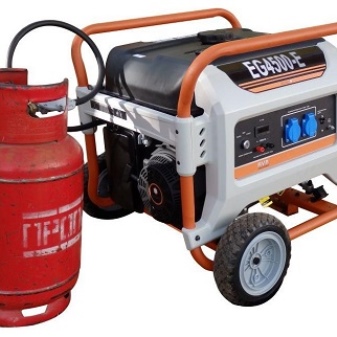

Those models that work from the main gas pipeline have much more advantages.
- The unit, which runs on main gas, is a solid stationary installation, which would simply be impractical to produce short-lived. Once installed on a pipe, this device does not imply a simple move to a new location, but without unnecessary movements it will successfully and productively work for many years.
- Due to the fact that our country is one of the largest producers of natural gas in the world, this raw material is relatively inexpensive in our country. The gas pipe, of course, is not found everywhere, but if the house is located in a gasified summer cottage village, and there are problems with the power supply, such a unit will not interfere. Compared to generators operating on other types of fuel, this option looks cheap and profitable.
- Burning natural gas is much less harmful to nature than using other types of fuel.Of course, any combustion contributes to an increase in the ambient temperature, but still, coal, wood and gasoline smoke much more strongly.
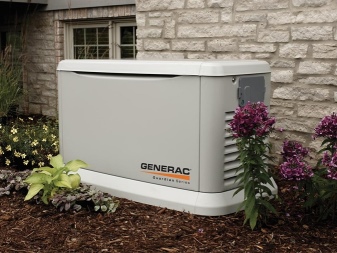
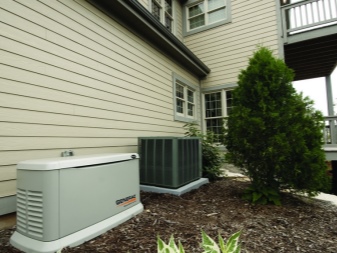
However, we have repeatedly mentioned above that the gas generator is often used precisely to hedge against sudden power outages, and not as a full-fledged replacement for mains electricity.
Self-production of electricity from gas will still cost a household more than buying it from the state. Therefore, such a generator can be viewed as a step towards their own independence, but in no case as a means to save money.

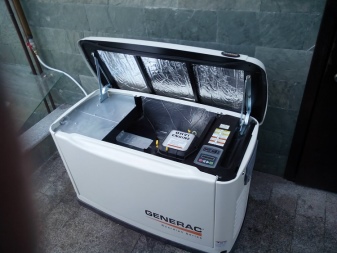
In addition, such equipment has other disadvantages.
- The proximity to gas is very dangerous for people, and the more appliances use this type of fuel, the more intensively it happens, the higher the risk. The gas burns well, and in a close and closed room, its sharp ignition is fraught with an explosion of destructive force. This imposes increased responsibility on residents - the requirements of safety regulations during installation and maintenance, as well as during operation, must be strictly observed.
- The above-described danger to life and property also means that special permits are required for the installation. In a private sector, an explosion in one of the buildings is unlikely to cause serious damage to neighbors, but it can knock out windows in surrounding houses or provoke the spread of a fire. The bureaucracy in our country, as you know, is not in the least interested in making it easy for citizens, therefore it will be difficult to get permission to install a main gas generator.
- To ensure that the generator cannot be accessed by strangers, the device is often placed in the house. The combustion process involves the active use of oxygen from the atmosphere, so the owners are obliged to make sure that ventilation is working perfectly in the building. If this is not the case, the unit will burn oxygen and replace it with carbon monoxide. For a sleeping person, this can end in disaster.
Devices operating on liquefied gas have their own peculiarity - it should not be called outright a disadvantage, but it limits the number of options for where to install the unit.
The fact is that cylinders with liquefied gas cannot be stored at too low a temperature, therefore, it is better to place the structure in a heated room.
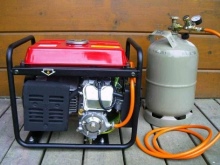
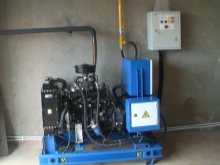
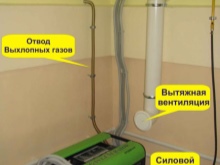
Species overview
An electric generator is just a general name for a number of different equipment, which is classified according to at least three criteria. Each of them matters if you want to acquire quality equipment that meets all your expectations.
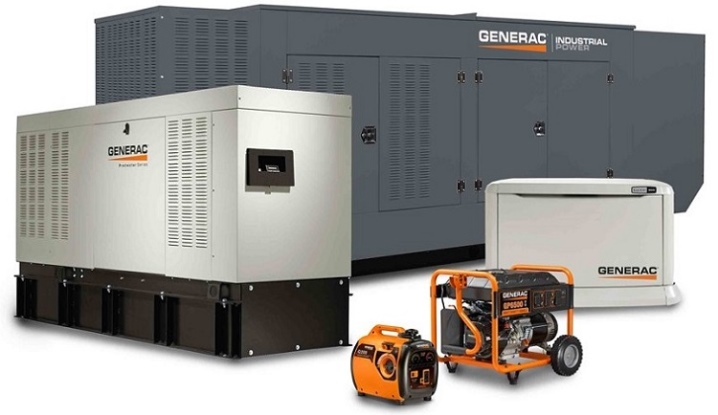
By functionality
The easiest option is a standard autonomous gas station, which can only take gas from a pipe or cylinder and burn it, generating electrical energy.
Cogeneration mini-generator already represents an order of magnitude more complex design, since it utilizes the heat released during combustion with the help of a built-in heat exchanger. This device, of course, will not help in any way for the needs of heating, but the space around the gas turbine apparatus will not be overheated, which is important in many cases.
Finally, trigeneration model - This is an electricity generator that at the same time performs the functions of an air conditioner. The question is how much of its power will be enough, but such a functional unit can theoretically come to self-sufficiency.
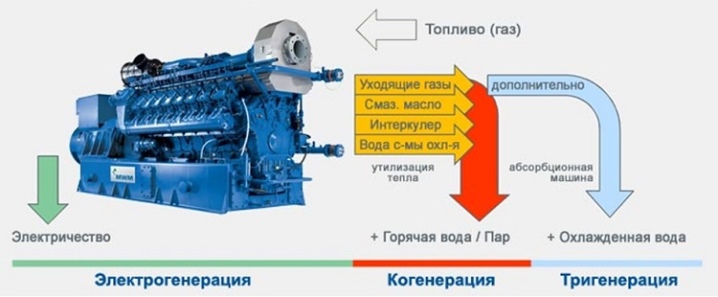
By design and type of use
The classification here is pretty simple - someone needs emergency power source, which they do not plan to turn on often, somewhere the gas generator plays the role of a periodic safety net for unreliable power lines, and in some cases the device turns out to be necessary for permanent use.
By the same logic, it is worth paying attention to its power and match it to the needs of the home. Models up to 5 kW should be considered modest - even if you use electricity alone, simultaneously operating a refrigerator and a multicooker may be too serious for him.
For a family, models with a capacity of 6 to 10 kW are most often chosen, but everything depends only on how much equipment this family has and how much energy it may need at the same time.


By type of fuel
We have already mentioned this classification very briefly above. Models working on main natural gase, are included in the gas supply network. Such a unit is devoid of mobility, but it provides sufficient power, serves for a long time, does not make you think about how to replenish fuel supplies. LPG models they work on a completely different principle - without being tied to a pipe, they are portable.
The possibility of transportation depends only on the volume of the cylinder, but there are generally modest designs that, if you really want to, can be taken on a hike, especially by car. Due to the relatively small reserves of gas in the cylinder, such a device usually does not produce high power. Due to the general modesty of its parameters, such a device is often silent or close to this indicator.
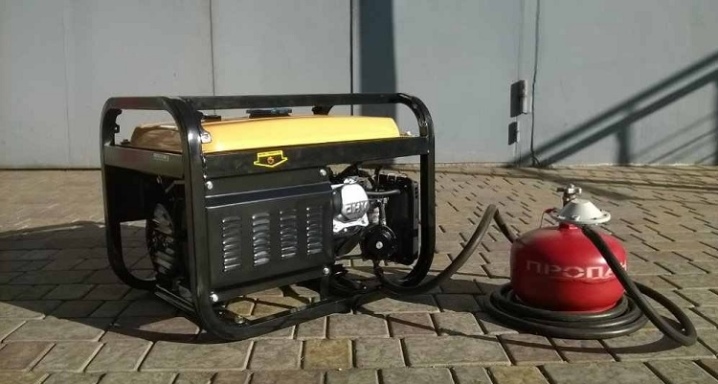
Separately, it should be noted that there is also gindustrial gas generators, including biogas and associated gas from oil production. There are no lines with such fuel, respectively, most often these are portable models with a cylinder. When purchasing such a unit, check how it is adapted to work on alternative fuels - this may come in handy.
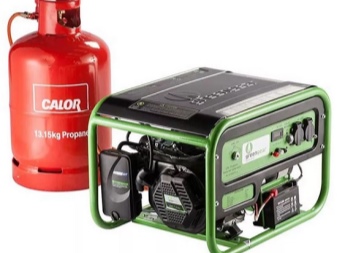
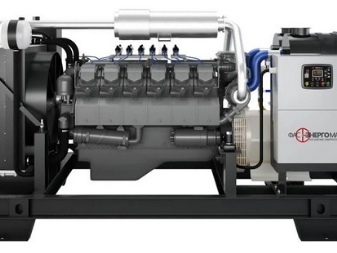
Popular manufacturers
Gas generators are produced in many countries around the world. The names of the brands involved in the production of such equipment will not say anything to the layman, who was not previously interested in this industry. However, it is worthwhile to understand the market in advance, because not only the reliability of your power supply, but also your safety depends on the adequacy of the manufacturer.
By tradition, in the case of potentially hazardous equipment, many of our citizens would prefer Western manufacturers.... Among these, the Americans have a special priority - a number of their firms, such as Mirkon Energy, Generac or Briggs and Strattonare considered very reliable.
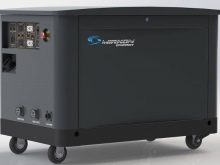
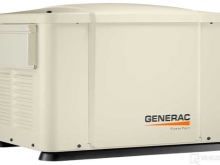
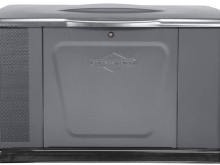
Alternatively, you can pay attention to the products of the French brand. SDMO.
Moreover, it cannot be said that Russian-made gas generators are not in demand at all. On the contrary, they are often bought due to their relative cheapness, and many owners do not even suspect that their unit is domestic. The fact is that domestic brands have competently disguised themselves as foreign ones - among the worthy of attention we will single out Grandvolt, REG, FAs, Gazvolt.
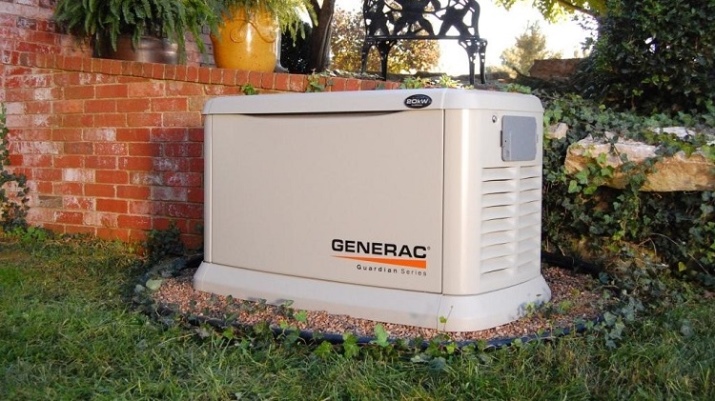
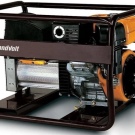
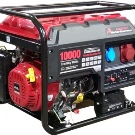
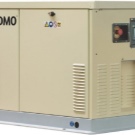
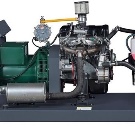
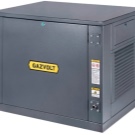
Criterias of choice
When deciding to buy a gas powered generator, be sure to pay attention to the following factors.
- Fuel variability. The types of fuel used by the gas generator have already been mentioned above. At the same time, some models can operate not only on gas of various types, but also on gasoline or diesel fuel. Versatility is a guarantee of uninterrupted operation.
- Technical specifications. The main thing is power, it should be enough for the normal operation of all equipment in the house. Pay attention also to the phasing and the level of the output noise, because not all models are silent.
- Cooling system type.
- Automatic protection system. In cheap generators it may not be at all, but for the safety of people and property, such an addition to the design will not interfere at all.
- Startup type. It can be manual, semi-automatic or automatic. It all depends on the needs of a particular owner. Only a manual start will mean a not too high cost of the unit, while automation is needed to quickly respond to a blackout or turn on on a schedule, in order, for example, to maintain a positive temperature in a country house that is empty in winter.
- Reliability. No one can be sure of it in advance, but if a gas generator is released by a brand that has been collecting thousands of positive reviews over the past many years, then this increases the chances of not being disappointed in the purchase.
- Product cost. For a private house in which only one family lives, the issue of price may be perhaps the most significant. A gas generator is a device that is better not to buy at all if there is no money for a high-quality model.
This means that you can save money only if the two models are absolutely identical, but cost differently, or if you find the same model elsewhere at a lower cost.
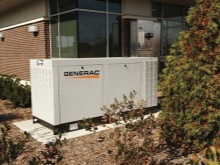
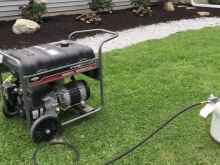
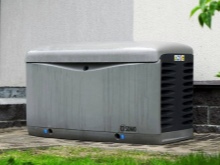
Installation features
The liquefied gas generator is connected to the cylinder through a special reducer - this task is not difficult and is performed by the owners on a regular basis. It is more difficult to connect a stationary unit to the network - only professionals have the right to do this and only according to the results of officially obtained permits. In addition to the presence of a gas pipe, several important requirements are put forward for the room chosen for the installation of an electric generator.
- Compulsory and good flow ventilation of the air. Promotes better combustion and helps to replenish oxygen losses in the atmosphere of the home.
- The generator should not be located close to walls. The room should be large enough so that the device can be walked around from different sides and examined for damage. The owner must be able to get close to the unit from any side - this is a matter of operational safety.
- The room with the gas generator must be equipped with fire extinguishing means. With an instant reaction and a successful combination of circumstances, they will help you quickly avoid huge problems.
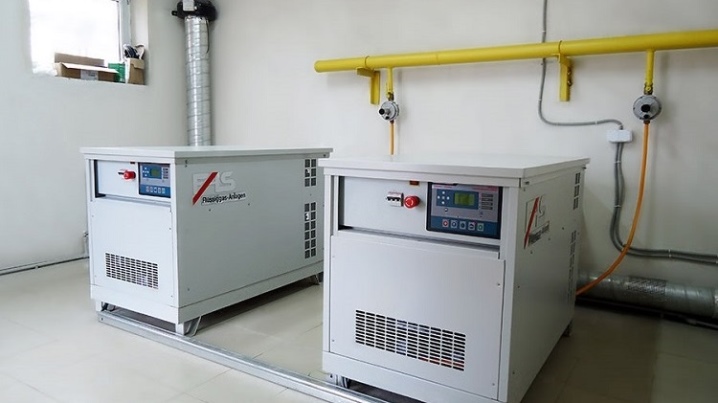
The following video provides a detailed overview of the Gazlux CC 5000 D gas generator.









The comment was sent successfully.